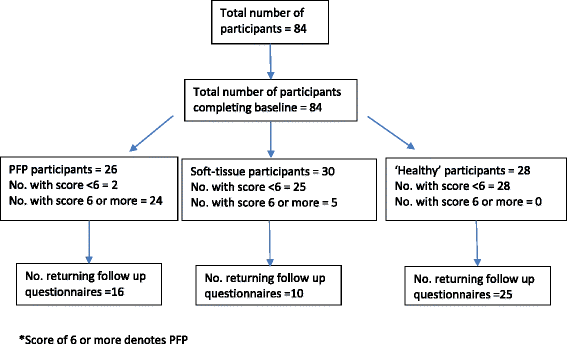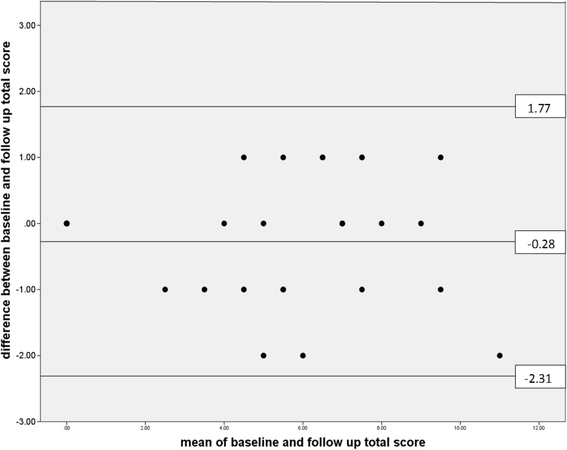A questionnaire to identify patellofemoral pain in the community: an exploration of measurement properties
- PMID: 27245443
- PMCID: PMC4886395
- DOI: 10.1186/s12891-016-1097-5
A questionnaire to identify patellofemoral pain in the community: an exploration of measurement properties
Abstract
Background: Community-based studies of patellofemoral pain (PFP) need a questionnaire tool that discriminates between those with and those without the condition. To overcome these issues, we have designed a self-report questionnaire which aims to identify people with PFP in the community.
Study designs: comparative study and cross-sectional study.
Study population: comparative study: PFP patients, soft-tissue injury patients and adults without knee problems. Cross-sectional study: adults attending a science festival.
Intervention: comparative study participants completed the questionnaire at baseline and two weeks later. Cross-sectional study participants completed the questionnaire once. The optimal scoring system and threshold was explored using receiver operating characteristic curves, test-retest reliability using Cohen's kappa and measurement error using Bland-Altman plots and standard error of measurement. Known-group validity was explored by comparing PFP prevalence between genders and age groups.
Results: Eighty-four participants were recruited to the comparative study. The receiver operating characteristic curves suggested limiting the questionnaire to the clinical features and knee pain map sections (AUC 0.97 95 % CI 0.94 to 1.00). This combination had high sensitivity and specificity (over 90 %). Measurement error was less than the mean difference between the groups. Test-retest reliability estimates suggest good agreement (N = 51, k = 0.74, 95 % CI 0.52-0.91). The cross-sectional study (N = 110) showed expected differences between genders and age groups but these were not statistically significant.
Conclusion: A shortened version of the questionnaire, based on clinical features and a knee pain map, has good measurement properties. Further work is needed to validate the questionnaire in community samples.
Keywords: Diagnosis; Differential; Patellofemoral pain; Reliability; Sensitivity and specificity; Validation studies.
Figures
References
-
- Callaghan M, Selfe J. Has the incidence or prevalence of patellofemoral pain in the general population in the United Kingdom been properly evaluated? Phys Ther Sport. 2007;8:37–43. doi: 10.1016/j.ptsp.2006.07.001. - DOI
Publication types
MeSH terms
LinkOut - more resources
Full Text Sources
Other Literature Sources



